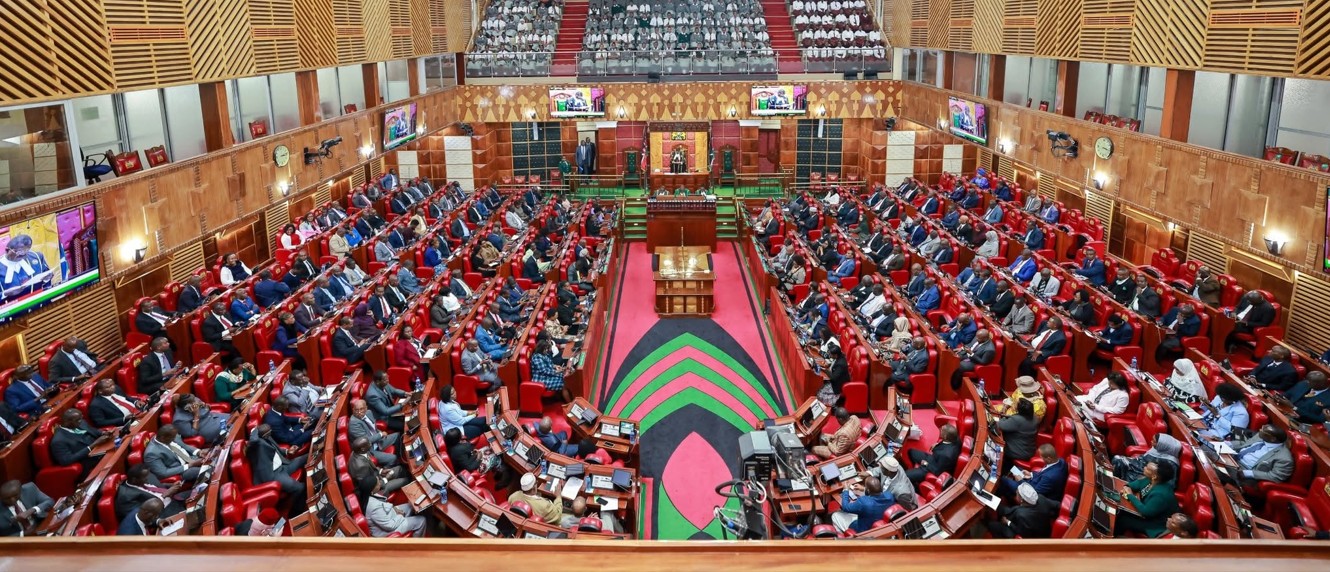Met Department: Expect more rains in May

The department urged relevant authorities to put in place measures to avert possible negative impacts that may arise.
Kenyans have been advised to expect heavy rains in May by the meteorological department in a new weather report it released on Tuesday.
The weatherman said the month of May marks the end of the long rains season over several parts of the country except for the Coastal region and the Western parts of the country where rainfall will continue into June.
More To Read
- Gaza faces humanitarian disaster with thousands trapped in flooded camps
- Death toll in Elgeyo Marakwet landslide hits 37, 11 people still missing
- Dozens killed, hundreds displaced as heavy rains batter several counties
- KeRRA warns of impassable roads as landslides kill 15 people in Elgeyo Marakwet
- Severe flooding affects over 960,000 in South Sudan: UN
- How blocked drainage systems, open sewers threaten lives, businesses in Eastleigh
According to Director of Meteorological Services David Gikungu, the forecast for May indicates that several parts of the country are likely to experience near-average to above-average rainfall with occasional storms also likely to be experienced.
"The forecast for the next three months indicates that rainfall is expected over the Highlands West of the Rift Valley, the Lake Victoria Basin, Central and South Rift Valley as well as the Coastal region," said Gikungu.
For residents of the North-Eastern Region that consist of Marsabit, Mandera, Wajir, Garissa, and Isiolo counties, the occasional rainfall is expected during the month of May with the total amounts of rainfall likely to be near to above-average.
The Coastal strip that consists of Mombasa, Kilifi, Lamu, Kwale and parts of Tana River counties will also have the total amounts of rainfall expected in the month of May to be near to above average with occasional storms.
"There is a likelihood of flooding in low-lying areas and flood plains especially over the Lake Victoria Basin, the Highlands West of the Rift Valley, the Coastal region as well as in poorly drained urban centres where rainfall is expected," said Gikungu.
The department urged relevant authorities to put in place measures to avert possible negative impacts that may arise.
County governments are also advised to clear drainages in good time to avert artificial flooding of the urban areas. The public are advised not to drive or walk through flooded rivers or moving waters.
On a positive note, the anticipated increase in rainfall is poised to improve water availability, benefiting both domestic and livestock needs. To capitalize on this resource, the public is encouraged to adopt rainwater harvesting and storage techniques.
However, this surge in rainfall, according to the Meteorological Department, may also bring about adverse effects, such as heightened siltation and sedimentation in rivers and dams, as well as the risk of flooding, including river channel overflows, urban flooding, and flash floods.
To address these challenges, authorities are advised to prioritize dam desilting efforts and implement strategies for separating stormwater and wastewater channels.
"Furthermore, the rise in inflow into hydropower reservoirs is anticipated to bolster hydropower generation and facilitate groundwater recharge for geothermal power production. Nonetheless, it is crucial to acknowledge that increased rainfall may lead to disruptions in power supply, posing socio-economic risks," noted Gikungu.
The rains are also going to come with flash floods in various regions, including the Lake Victoria Basin, the Highlands West of the Rift Valley, the Central and South Rift Valley, the Coastal region, and parts of the Highlands East of the Rift Valley, including Nairobi County.
"The anticipated floods pose a risk of causing structural damage to infrastructure such as roads, bridges, and sub-standard facilities. Consequently, transportation may be affected, with the possibility of property damage and loss of lives. It is crucial for the public to exercise caution while driving in rainy conditions and to refrain from crossing flooded roads to minimize the risk of accidents resulting from such adverse weather conditions."
Other Topics To Read
Top Stories Today













































